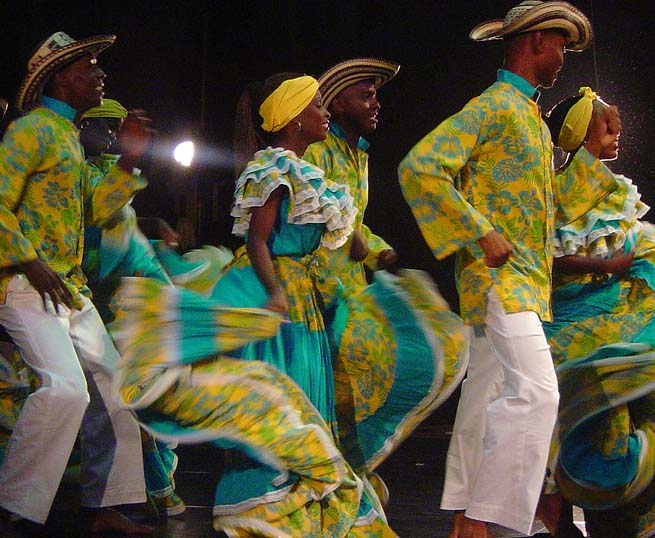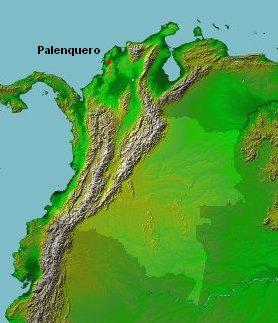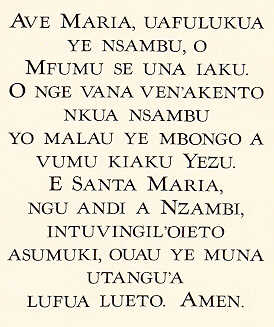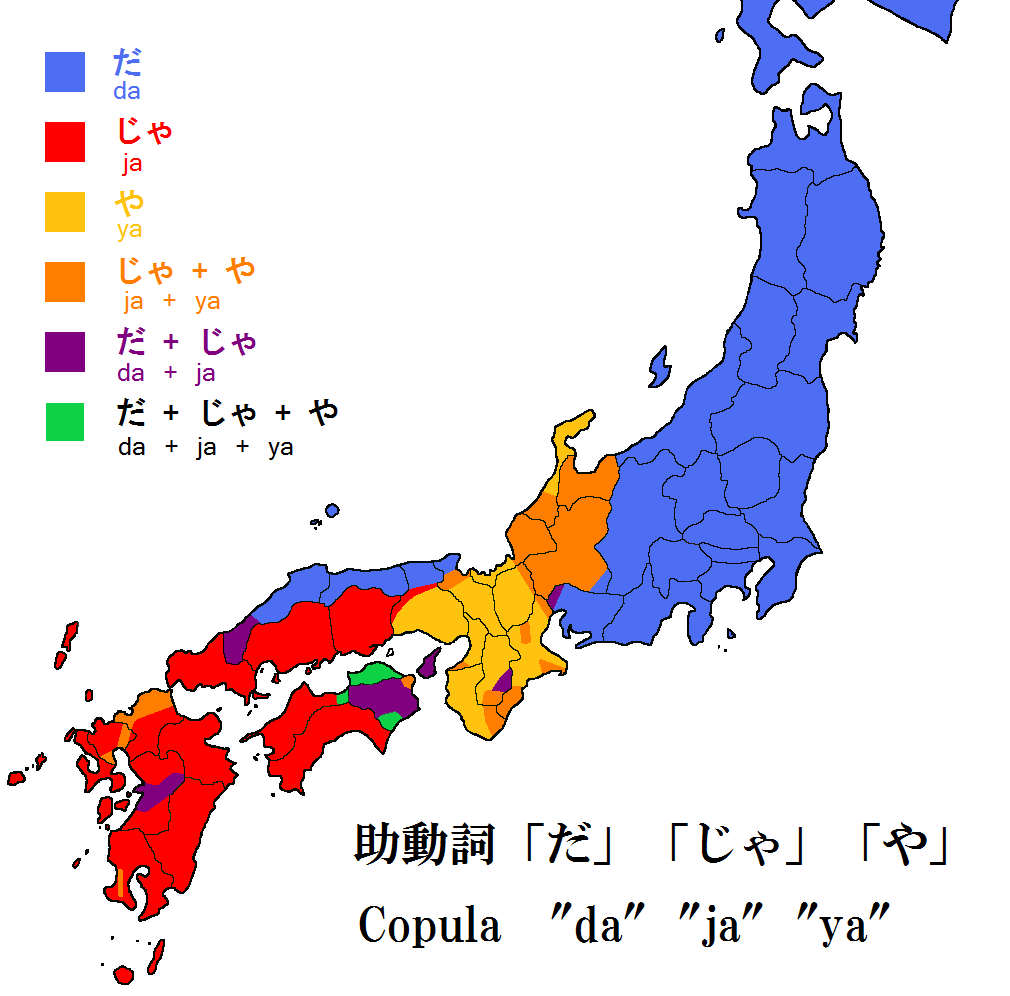|
Palenquero
Palenquero (sometimes spelled Palenkero) or Palenque () is a Spanish-based creole language spoken in Colombia. It is believed to be a mixture of Kikongo (a language spoken in central Africa in the current countries of Congo, DRC, Gabon, and Angola, former member states of Kongo) and Spanish. However, there is not sufficient evidence to indicate that Palenquero is strictly the result of a two-language contact. It could also have absorbed elements of local indigenous languages. Palenquero is considered to be the only surviving Spanish-based creole language in Latin America. In 2018 more than 6,600 people spoke this language. It is primarily spoken in the village of San Basilio de Palenque, which is southeast of Cartagena, and in some neighbourhoods of Barranquilla. History The formation of Palenquero is recorded from the 17th century with the dilution of the Spanish language and the increase of maroon activity. Existing records dating from the era of Cartagena’s slav ... [...More Info...] [...Related Items...] OR: [Wikipedia] [Google] [Baidu] |
San Basilio De Palenque
San Basilio de Palenque or Palenque de San Basilio, often referred to by the locals simply as Palenke, is a Palenque village and corregimiento in the Municipality of Mahates, Bolivar in northern Colombia. Palenque was the first free African town in the Americas, and in 2005 was declared a Masterpiece of the Oral and Intangible Heritage of Humanity by UNESCO. History Spaniards introduced enslaved Africans in South America through the Magdalena River Valley. Its mouth is close to the important port of Cartagena de Indias where ships full of Africans arrived. In 1599 some 30 slave runaways escaped into the forest under the leadership of Captain Benkos Biohó. The group of Maroons defeated the first expedition of 20 armed men sent against them, killing the expedition leader Juan Gómez. Some years after they escaped, they had wandered between the Matuna swamp and the Dique channel. In one of his raids to the south, Benkos Biohó found a piece of land that offered ideal condition ... [...More Info...] [...Related Items...] OR: [Wikipedia] [Google] [Baidu] |
Spanish-based Creole Languages
A Spanish creole (), or Spanish-based creole language, is a creole language (contact language with native speakers) for which Spanish serves as its substantial '' lexifier''. A number of creole languages are influenced to varying degrees by the Spanish language, including varieties known as Bozal Spanish, Chavacano, and Palenquero. Spanish also influenced other creole languages like Annobonese, Papiamento, and Pichinglis. Any number of Spanish-based pidgins have arisen due to contact between Spanish and other languages, especially in America, such as the used by the Panare people of Venezuela and Roquetas Pidgin Spanish used by agricultural workers in Spain. However, few Spanish pidgins ever creolized with speakers of most pidgins eventually adopting Spanish or other language as their main tongue. Spanish creole languages Bozal Spanish Bozal Spanish is a possibly extinct Spanish-based creole language that may have been a mixture of Spanish and Kikongo, with Portug ... [...More Info...] [...Related Items...] OR: [Wikipedia] [Google] [Baidu] |
Colombia
Colombia, officially the Republic of Colombia, is a country primarily located in South America with Insular region of Colombia, insular regions in North America. The Colombian mainland is bordered by the Caribbean Sea to the north, Venezuela to the east and northeast, Brazil to the southeast, Peru and Ecuador to the south and southwest, the Pacific Ocean to the west, and Panama to the northwest. Colombia is divided into 32 Departments of Colombia, departments. The Capital District of Bogotá is also the List of cities in Colombia by population, country's largest city hosting the main financial and cultural hub. Other major urban areas include Medellín, Cali, Barranquilla, Cartagena, Colombia, Cartagena, Santa Marta, Cúcuta, Ibagué, Villavicencio and Bucaramanga. It covers an area of 1,141,748 square kilometers (440,831 sq mi) and has a population of around 52 million. Its rich cultural heritage—including language, religion, cuisine, and art—reflects its history as a co ... [...More Info...] [...Related Items...] OR: [Wikipedia] [Google] [Baidu] |
Maroons
Maroons are descendants of Africans in the Americas and islands of the Indian Ocean who escaped from slavery, through flight or manumission, and formed their own settlements. They often mixed with Indigenous peoples, eventually evolving into separate creole cultures such as the Garifuna and the Mascogos. Etymology ''Maroon'' entered English around the 1590s, from the French adjective , meaning 'feral' or 'fugitive', itself possibly from the American Spanish word , meaning 'wild, unruly' or 'runaway slave'. In the early 1570s, Sir Francis Drake's raids on the Spanish in Panama were aided by "''Symerons''", a likely misspelling of '. The linguist Leo Spitzer, writing in the journal ''Language'', says, "If there is a connection between Eng. ''maroon'', Fr. ', and Sp. ', Spain (or Spanish America) probably gave the word directly to England (or English America)." Alternatively, the Cuban philologist José Juan Arrom has traced the origins of the word ''maroon'' further t ... [...More Info...] [...Related Items...] OR: [Wikipedia] [Google] [Baidu] |
Kongo Language
Kongo or Kikongo is one of the Bantu languages spoken by the Kongo people living in the Democratic Republic of the Congo (DRC), the Republic of the Congo, Gabon, and Angola. It is a tonal language. The vast majority of present-day speakers live in Africa. There are roughly seven million native speakers of Kongo in the above-named countries. An estimated five million more speakers use it as a second language. Historically, it was spoken by many of those Africans who for centuries were taken captive, transported across the Atlantic, and sold as slaves in the Americas. For this reason, creolized forms of the language are found in ritual speech of Afro-American religions, especially in Brazil, Cuba, Puerto Rico, Dominican Republic, Haiti, and Suriname. It is also one of the sources of the Gullah language, which formed in the Low Country and Sea Islands of the United States Southeast. The Palenquero creole in Colombia is also related to Kong creole. Geographic distribution Kongo wa ... [...More Info...] [...Related Items...] OR: [Wikipedia] [Google] [Baidu] |
Creole Language
A creole language, or simply creole, is a stable form of contact language that develops from the process of different languages simplifying and mixing into a new form (often a pidgin), and then that form expanding and elaborating into a full-fledged language with Nativization, native speakers, all within a fairly brief period. While the concept is similar to that of a mixed language, mixed or hybrid language, creoles are often characterized by a tendency to systematize their inherited grammar (e.g., by eliminating irregularities). Like any language, creoles are characterized by a consistent system of grammar, possess large stable vocabularies, and are Language acquisition, acquired by children as their native language. These three features distinguish a creole language from a pidgin. Creolistics, or creology, is the study of creole languages and, as such, is a subfield of linguistics. Someone who engages in this study is called a creolist. The precise number of creole languages ... [...More Info...] [...Related Items...] OR: [Wikipedia] [Google] [Baidu] |
Mahates
Mahates is a river town and municipality located in the Bolívar Department, northern Colombia. The town of Mahates was founded on April 17, 1533 by Spanish conquistador Pedro de Heredia. The municipality of Mahates also covers the village of Palenque de San Basilio, inhabited mainly by Afro-Colombians which are direct descendants of Atlantic slave trade, African slaves brought by the Spanish during the Colonization of the Americas and have preserved their ancestral traditions. In 2005 the Palenque de San Basilio village was proclaimed Masterpiece of the Oral and Intangible Heritage of Humanity by UNESCO. History The town of Mahates was founded in 1533 by Pedro de Heredia Pedro de Heredia ( – 27 January 1554) was a Spanish conquistador, founder of the city of Cartagena de Indias and explorer of the northern coast and the interior of present-day Colombia. Early life Pedro de Heredia was born in in Madrid. He w ... after founding Cartagena de Indias. In 1538 was given in e ... [...More Info...] [...Related Items...] OR: [Wikipedia] [Google] [Baidu] |
Cartagena, Colombia
Cartagena ( ), known since the colonial era as Cartagena de Indias (), is a city and one of the major ports on the northern coast of Colombia in the Caribbean Coast Region, along the Caribbean Sea. Cartagena's past role as a link in the route to the West Indies provides it with important historical value for world exploration and preservation of heritage from the great commercial maritime routes. As a former Spanish colony, it was a key port for the export of Bolivian silver to Spain and for the import of enslaved Africans under the asiento system. It was defensible against pirate attacks in the Caribbean. The city's strategic location between the Magdalena and Sinú rivers also gave it easy access to the interior of New Granada and made it a main port for trade between Spain and its overseas empire, establishing its importance by the early 1540s. Modern Cartagena is the capital of the Bolívar Department, and had a population of 876,885 according to the 2018 census, mak ... [...More Info...] [...Related Items...] OR: [Wikipedia] [Google] [Baidu] |
Benkos Biohó
Benkos Biohó (late 16th century — 1621), also known as Domingo Biohó was a character created between legend and history considered a Mandinka leader who is described in literature to have escaped from the slave port of Cartagena with ten others. While there is no direct relationship between him and the municipality of San Basilio de Palenque, contemporary literary culture has led to the belief that he is the founder of the town, though this is inaccurate. In 1713 San Basilio de Palenque became the first free village in the Americas by decree from the King of Spain, when he gave up sending his troops on futile missions to attack their fortified mountain hideaway. Biography Biohó was born into a royal family in Guinea Bissau. He was of Mandinka origin. He was seized by the Portuguese slave trader, Pedro Gomes Reinel, sold to businessman Juan Palacios, and later, after transportation to what is now Colombia in South America, sold again to the Spaniard Alonso del Campo in ... [...More Info...] [...Related Items...] OR: [Wikipedia] [Google] [Baidu] |
Spanish Language
Spanish () or Castilian () is a Romance languages, Romance language of the Indo-European languages, Indo-European language family that evolved from the Vulgar Latin spoken on the Iberian Peninsula of Europe. Today, it is a world language, global language with 483 million native speakers, mainly in the Americas and Spain, and about 558 million speakers total, including second-language speakers. Spanish is the official language of List of countries where Spanish is an official language, 20 countries, as well as one of the Official languages of the United Nations, six official languages of the United Nations. Spanish is the world's list of languages by number of native speakers, second-most spoken native language after Mandarin Chinese; the world's list of languages by total number of speakers, fourth-most spoken language overall after English language, English, Mandarin Chinese, and Hindustani language, Hindustani (Hindi-Urdu); and the world's most widely spoken Romance language ... [...More Info...] [...Related Items...] OR: [Wikipedia] [Google] [Baidu] |
Copula (linguistics)
In linguistics, a copula (; : copulas or copulae; abbreviated ) is a word or phrase that links the subject of a sentence to a subject complement, such as the word ''is'' in the sentence "The sky is blue" or the phrase ''was not being'' in the sentence "It was not being cooperative." The word ''copula'' derives from the Latin noun for a "link" or "tie" that connects two different things. A copula is often a verb or a verb-like word, though this is not universally the case. A verb that is a copula is sometimes called a copulative or copular verb. In English primary education grammar courses, a copula is often called a linking verb. In other languages, copulas show more resemblances to pronouns, as in Classical Chinese and Guarani, or may take the form of suffixes attached to a noun, as in Korean, Beja, and Inuit languages. Most languages have one main copula (in English, the verb "to be"), although some (such as Spanish, Portuguese and Thai) have more than one, while ... [...More Info...] [...Related Items...] OR: [Wikipedia] [Google] [Baidu] |






